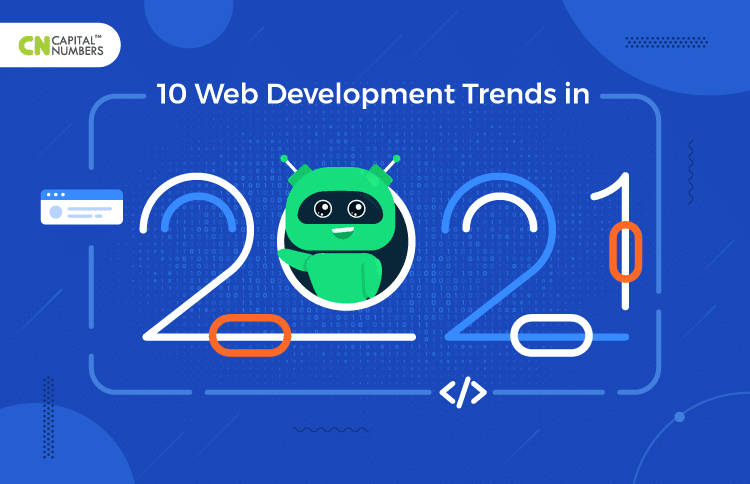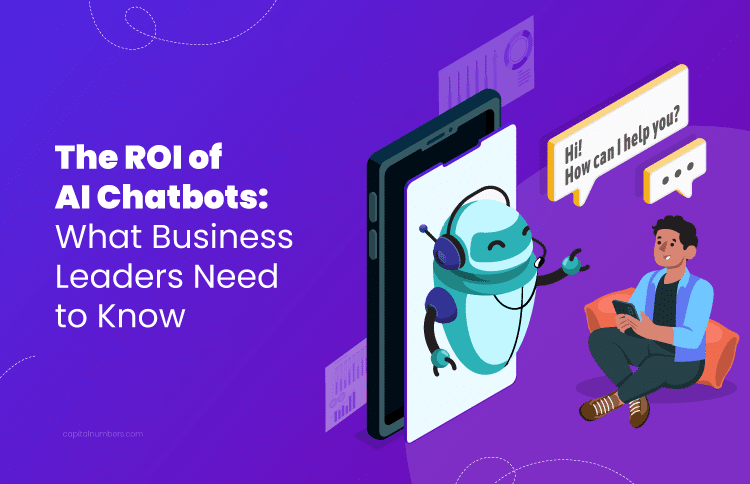10 Web Development Trends in 2021
Table of Contents
No one could have predicted how 2020 would play out. But, what we saw was a changed reality. The last six months have sped up digital transformation at a much faster pace than the previous decade. Every web development project that was already underway got accelerated, and at a massive scale.
So, what does this mean for the web development sector in 2021? Will there be fresh trends that will open up new opportunities? Will the core technologies continue to dominate the headlines? We are yet to find out. However, experts predict that the following will be the key trends that are likely to bring breakthrough results in the web development industry worldwide:
10 Web Development Trends in 2021
- Progressive Web Apps (PWAs)
With their unique advantages, Progressive Web Apps (PWAs) could lead to a faster web. These offer a full-fledged and full-screen user experience with shorter load times, even when there’s no Internet connection. PWAs are secure by default, and they always stay updated, thanks to pre-caching. Developers can use a single codebase to upload a PWA on the server without purchasing a license for the app stores. Recently, the Starbucks PWA has increased daily active users 2x, and Twitter Lite PWA saw a 75% in tweets with a load time of below 3 seconds even in slow connections. PWAs are going to be a prominent web product in 2021.
- Artificial Intelligence (AI) and Machine Learning (ML)
AI is still a critical technology that will become more widespread and powerful in 2021. AI-based systems will continue to provide transformational value to businesses globally. Firms in the eCommerce, education, and healthcare sectors will extensively use AI to personalize customer experiences, automate processes, and boost agility. IDC predicts that by 2023 worldwide spending on AI systems will reach almost $98 billion. What’s evident is that businesses will not only dip their toe into AI and ML solutions but dive deeper.
- Chatbots
With a projected worldwide market size of over $1.3 billion by 2024, chatbots will continue to be a driving force for business communications in the coming years. Integrated with Machine Learning algorithms, chatbots collect and analyze customers’ queries and provide accurate recommendations without human intervention. This technology improves customer support, cuts down costs, and frees up human personnel for other complex tasks. And the demand for this automated communication solution is expected to rise even more in 2021.
- Single Page Applications (SPAs)
When it comes to comfortable and uninterrupted scrolling, single-page applications (SPAs) top the chart. They’re fast and responsive, comes with caching capabilities, and provides a linear user experience even at low bandwidth. Unlike traditional web apps, SPAs are easy to maintain, load pages at the first request, and synchronize content whenever an Internet connection is available. Facebook, Uber, and Google already use SPAs to deliver a seamless and intuitive user experience. And more companies are likely to leverage SPAs to ease customer navigation in the years to come.
- Accelerated Mobile Pages (AMPs)
Known for smooth loading capabilities, accelerated mobile pages (AMPs) are here to stay. AMPs have gained massive momentum because they are lightweight and 85% faster than non-accelerated mobile pages. They help businesses create streamlined and clean versions of webpages that are high-performing across devices and distribution platforms. The New York Times, The Washington Post, and The Guardian were among the first to jump onto the AMP bandwagon and offer exceptional UI/UX. In the future, more companies are likely to replace cluttered websites with AMPs to increase conversions and reduce bounce rates.
- API-first Approach
An API-first approach can help developers work faster, and companies save costs. By designing around well-documented APIs, businesses can create a whole new world of communications between applications. A robust API-approach is a crucial enabler of an organization’s digital presence and future expansions. Therefore, the prospects of the API economy look promising and exponential in the coming years.
- Native App Development
It’s no surprise that native app development will gain momentum because of the security, interactivity, and intuitiveness that these apps offer. Since these apps are built using core APIs and programming languages for a specific platform (either iOS or Android), they provide a native look and feel. They’re scalable, easy-to-maintain, and low-cost. Therefore, native apps will continue to be an essential web development approach in the upcoming years, especially in the banking and fintech sectors.
- Internet of Things (IoT)
The rise of IoT will not stop in 2021. Bluetooth trackers, fitness bands, smart home systems, point-of-sales beacons, car gadgets, etc., will continue to gain popularity. There will be a lot more IoT implementation in the coming years to improve people’s quality of life. For example, location data will become prominent, healthcare apps will dominate, and connected assets will expand due to remote work models. An IDC report states that worldwide spending on the IoT will reach nearly $1.4 trillion in 2021. There’s no doubt that businesses will be heavily investing in connected apps to tap into this growth market.
- Continuous Integration and Deployment
There will be a crucial focus on Continuous Integration (CI) and Continuous Deployment (CD) to ensure faster and efficient software delivery. DevOps teams will be optimizing CI/CD pipeline because it helps with smaller code changes, faster time-to-resolution, fault isolations, test reliability, smaller backlogs, reduced costs, quicker releases, and improved customer satisfaction. 2021 will see increased CI/CD workflows’ adoption to automate processes and address client requests without delay.
- Voice Commerce
TechCrunch states that around 66.4 million Americans own a smart speaker. Research also shows that voice commerce sales will hit $40 billion by 2022. What’s clear from these numbers is that businesses will be optimizing their online stores for voice searches to thrive in the market successfully. Looking at the growth trend, many companies have already started incorporating voice-based navigation in their websites and mobile apps. Amazon and Google are even pushing regional languages in their virtual assistant devices to simplify the customers’ shopping experience.
To Sum Up
Major disruptions (be it a pandemic or a shifting of an industry) always open up technology opportunities. Up until 2019, we’ve seen many such disruptions leading to technological advances. However, 2020 has been one of the unique years that has accelerated technology in a way we’ve never seen before.
As we enter this new year, 2021, businesses need to look at how technology will move the world next. The above are some of the key web development trends that companies must keep an eye out for.
If you’re interested in implementing one of these technologies to future-proof your business, reach out to us.
We’ll work on cutting-edge techs that can help you digitally transform, innovate, and keep up with the changing times.















